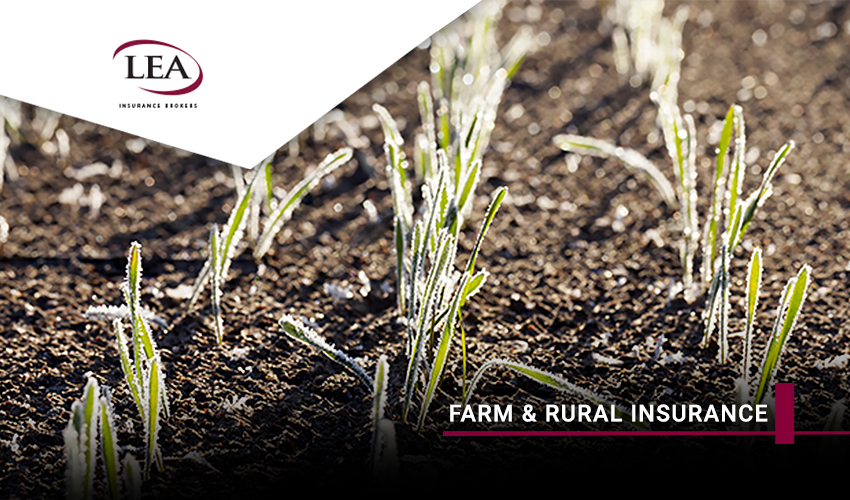
Protect Your Winter Crop Against the Frost with these Tips
Frosts can savage crops, with the bill running into millions of dollars. The Grains Research Development Corporation estimates frost costs the grains sector a whopping $360M to $400M annually, particularly when it happens during grain fill.
The most frost-susceptible cereal crops are durum, triticale, wheat, barley, cereal rye and oats, but it can depend on whether they’re flowering. As for pulse crops, it’s field peas, faba (broad) beans and lupins. Canola is prone to frost damage, but can recover. It’s not always the destroyer, though. With oats, for example, frost could mobilise sugars and improve the product’s quality.
So what can you, as a crop farmer, do to protect your precious harvests if frost is a peril in your paddocks?
Frost in Australia
While there isn’t a ‘Frosts Near Me’ smartphone app yet, the Bureau of Meteorology (BoM) offers its frost potential forecast website. However, it relies on computer models, not data from weather forecasts, so is limited.
For the longer term, the next best thing is the BoM’s annual frost potential map. It allows you to drill down into regions and change the temperature threshold. Combine this with your records to help identify frost-free paddocks on your property. Check with other local farmers for insights on frost dates and regions.
Despite overall temperature increases due to climate change, the incidence of late-season frost is increasing in Australia’s wheat belt, say researchers. Studies in NSW point to drier atmospheric conditions in spring leading to out-of-season October frosts.
Protect the soil with cover crops
The NSW Department of Primary Industries advises growing a green manure crop that grows quickly to cover the soil and can be turned in before it matures. Even better, mulch or slash it. Another option is to spray a knockdown herbicide and keep the crop standing to protect the soil until cultivation.
Consider a cover crop even if you grow as many as three crops per year. And, it doesn’t have to be a bulky cover crop – go for a mix of grass and legume or just grass. Aim to avoid leaving bare soil as the elements will easily damage and erode it.
In short, cover crops help:
- Protect the soil
- Maintain fertility
- Control weeds and disease
- Reduce the need for cultivation
- Improve paddocks, so they’re drier, and soil nitrogen is more available.
Balance this with the disadvantages of cover crops – you’re losing land for potential cash crops, extra seed and costs, the plants can become weedy and you may need to add nitrogen four-to-six weeks before planting for a speedier cover crop breakdown. As well, stubble’s ability to manage frost risk depends on the site, season and landscape, says the Grains Research & Development Corporation.
Other strategies
Another option that can minimise frost risk is through pasture rotation, suggests Agriculture WA. It also recommends using multiple varieties that flower at different times within your target flowering period. This may allow you to reduce the impact of sporadic frosts that happen during this time. Check out the National Variety Trials program for the latest on more than 650 trials spanning 10 crop species.
In NSW’s Riverland, growers have successfully sprayed their crops with a molasses-magnesium-sulphur mix to protect their produce. They say being pure sugar, the molasses doesn’t freeze easily, so the skin of the fruit maintains its quality. Other farmers will run warm water in the irrigation systems to boost night temperatures and reduce tree damage from frost. Keeping the soil wet reduces ice crystals because the soil can act as a heat sink.
Meanwhile, in Victoria’s north-west, an orchardist uses mobile frost fans to blow warm air towards the crops. Even better, she manages it remotely via a smartphone app. Another tactic is lighting hay bales in outlying areas of the orchard.
As well, a West Australian biologist recently scooped a national science and innovation award to help develop the concept of an ‘ice-nucleating’ bacteria as a spray to protect crops from frost. Definitely a space to watch.
Sourcing seeds of crops bred for improved reproductive frost tolerance makes sense, too. Researchers say that allows early sowing to lower the risks of drought or heat stress later in the season.
Their number-crunching showed Australia’s wheat belt overall could save almost $2 billion annually (in direct and indirect costs) using those seeds plus reducing direct frost damage. There was some variation, though. In the west, wheat farmers gained more by applying extra nitrogen and reducing direct frost damage. Meanwhile, in the east, sowing frost-tolerant seeds reaped the largest economic benefit.
Secure the right insurance
It’s prudent to also consider the right insurance to minimise your frost risks. These usually come under a multi-perils crop policy and cover for:
- Major perils including hail and fire
- Damage from chemical overspray or staying livestock
- Your harvested crop on your farm as well as in transit
- Netting, such as for orchardists and vignerons
- Agreed crop value
- Extra harvest allowance
- Deferring paying your premium until post-harvest.
As well, since 2018 crop growers have been able to insure specifically against frost and crop establishment failure. This specific policy could be added to a policy, such as for hail and fire.
We can guide you to better manage your risk profile for your crops, including for frost.
